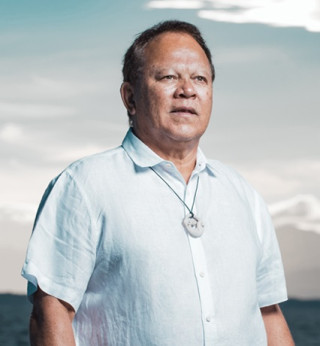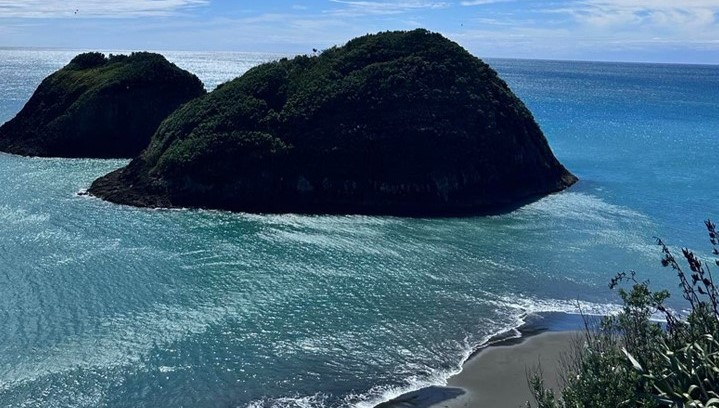Designing and implementing solutions | Te waihanga me te whakatinana whakataunga
Strategies and action plans are vital for collective action to deliver results.
On this page
This step involves creating a strategy for achieving your goals, making an action plan and implementing solutions.
Creating a strategy
A strategy formalises the shared vision, goals and overall approach for the process, as well as measures of success. It should help you to identify and manage risks, uncertainties and barriers to progress. A strategy gives you the overarching framework for action.
Another way to describe what you are doing is developing a theory of change, which is a roadmap to help you get from where you are to where you want to go.[1][2] This roadmap will show how change will happen effectively and why certain steps and pathways are likely to be successful.
Think not only about what success looks like, but also what might fail, need fixing or take extra time. Do some people or groups need time to develop trust, skills, capacity or understanding? Do you have all the information you need to anticipate the consequences of your actions? Have you thought about the best places to intervene in the system that you’re dealing with? Have you thought about how much resistance or pushback you will face, and from whom?
The Community Tool Box identifies the following criteria for successful strategies:
- Giving overall direction
- Fitting resources and opportunities
- Minimising resistance and barriers
- Reaching those affected
- Advancing the mission
Developing successful strategies: Planning to win(external link) — Community Tool Box
Te Tauihu Intergenerational Strategy (top of the South Island)

Te Tauihu Intergenerational Strategy is a wellbeing framework for the region of the South Island from Mohua Golden Bay to Kapara Te Hau Lake Grassmere. The strategy’s development was convened by Wakatū Incorporation and included regional iwi tribes, local government, business and community organisations, and central government. Central to this strategy is the vision of Tūpuna Pono, To Be Good Ancestors. The rangatahi of Te Tauihu identified 3 important aspects of this vision:
- Restore and value our connection to the natural world
- An inclusive society where no one is left behind
- A resilient sustainable economy
The strategy identifies 8 intergenerational wellbeing outcomes:
- Te taiao the natural world
- Pūtea economy
- Te tauihutanga identity
- Tāngata people and communities
- Te rākau taumata place
- Papa whenua infrastructure
- Rangatiratanga leadership
- Mātauranga knowledge
The strategy also identifies the people who can enable and deliver change.
Te Tauihu Intergenerational Strategy – Wakatū Incorporation(external link) — tetauihu.nz
Photo credit: Daniel Allen/This NZ Life
Making an action plan
Good plans will specify realistic goals and timelines and give responsibilities to the right people. They will ensure that action is coordinated, rather than ad hoc and reactionary. Good plans also lend credibility to your community because they clearly demonstrate a commitment to achieving objectives. This can help to attract collaborators, supporters and funders.
The Community Tool Box suggests that each action step should include information on:
- What the action step entails.
- Who has responsibility for the action and who will be involved in delivering it.
- When it will take place, and for how long.
- What resources are needed to carry out the action.
- How to communicate the action, and to whom.
Developing an action plan(external link) — Community Tool Box
When you are facing uncertainty, effective action plans might be more about pathways than actions. This is especially relevant if your community is preparing for complex challenges where it is hard to anticipate all the flow-on effects or risks and opportunities.
Examples of these types of uncontrollable events are managed retreat from sea level rise, or an industrial transition from one set of technologies to another.[3] In these cases, you might need to be ready for rapid decision-making, or to arrange support from government or community organisations.
You’ll have many options. You can choose your pathway as the set of options that are likely to work best if you face foreseeable but unpredictable challenges. Understanding your pathway and being ready is an important action that can be taken collectively.
Examples of strategies and action plans
Some examples of community-led strategies and action plans in Aotearoa New Zealand are:
Ngā Hapori Momoho Thriving Communities Strategy(external link) — Auckland Council
Work plan(external link) — Southland Just Transition
Te Ara ki Kōpū(external link) — Te Arawa Climate Change Strategy
Te Tāhū o Te Whāriki(external link) — Ngāi Tahu Climate Change Strategy
Te Tāruke-ā-Tāwhiri(external link) — Auckland's Climate Plan
Taranaki 2050(external link) — Venture Taranaki
Te Tauihu Intergenerational Strategy – Wakatū Incorporation(external link) — Te Tauihu
Effective strategies and action plans should include measures for sustaining change over time, including actions like assessing progress, adapting to evolving circumstances, and providing for long-term funding and succession planning. Chapter 5 covers adaptive aspects of planning in more detail.
Taranaki 2050 Roadmap and Action Plan (Taranaki)
The region’s shared vision for 2050 is a high-value, low-emissions economy built on inclusivity and sustainability.
The Taranaki 2050 Roadmap represents a key step towards planning for new energy developments, building upon the region’s strengths in the oil and gas sector. It identifies, creates and supports new opportunities, new jobs, new skills and new investments that could emerge from the transition.
The roadmap was developed through a co-design process involving thousands of people across the region. The roadmap aims to enable sustainable and resilient growth for the entire region in a way that brings everyone along. Collaboration and partnership are central to the roadmap, alongside a focus on ensuring the people, businesses and communities who may be most affected by the transition are given opportunities.
To help achieve the region’s long-term vision, 12 transition pathway action plans have been developed. Te Puna Umanga Venture Taranaki, the regional development agency, has worked with regional leaders from local government, iwi, business, unions, community, education and central government to implement the roadmap.
Taranaki 2050(external link) — Venture Taranaki

Photo credit: Katie Brown
Implementing solutions
If you’ve made an action plan, you’re ready to start taking action.
Having invested extensive time and resources to get this far, people involved in your transition will have high expectations for actions that achieve meaningful change. But in a complex just transition process, implementation may be a process that unfolds over a long time.
It can be useful to define progressive stages for implementation. You may want to start with some smaller-scale, shorter-term actions that generate tangible wins. These can build confidence and goodwill and open doors to deeper and more challenging change.
[1] Theory of Change: UNDAF Companion Guidance [PDF, 566 KB](external link) — United Nations Development Group
[2] A Theory of Change – Evaluation Hub(external link) — Ministry of Education
[3] Pathology and failure in the design and implementation of adaptive management(external link) — ScienceDirect

